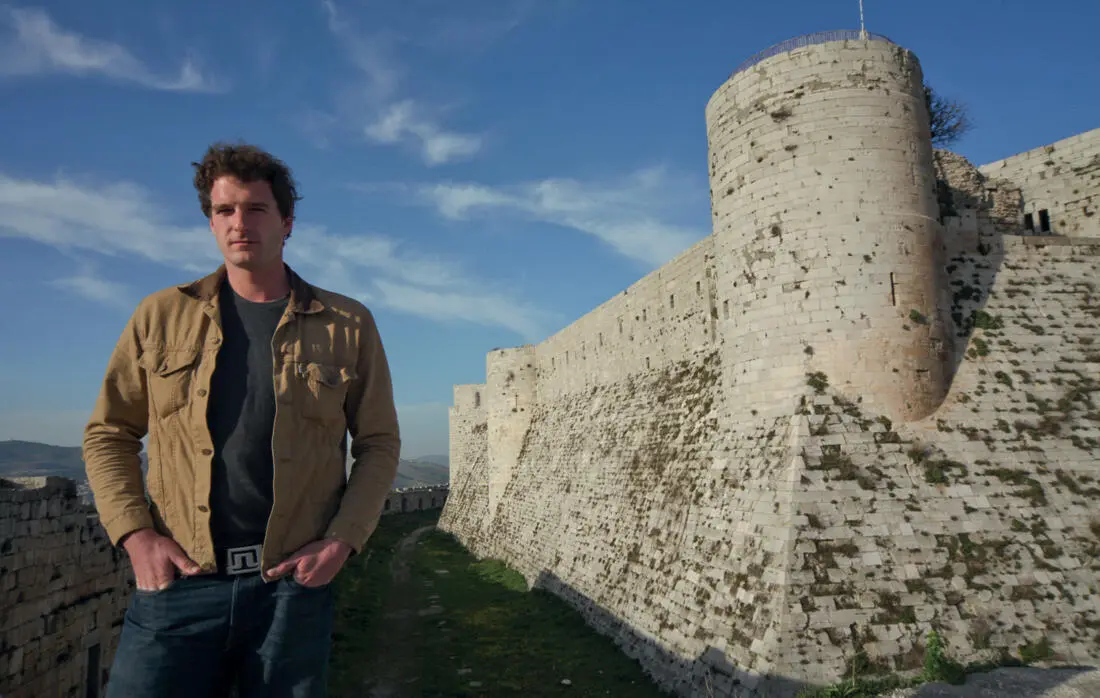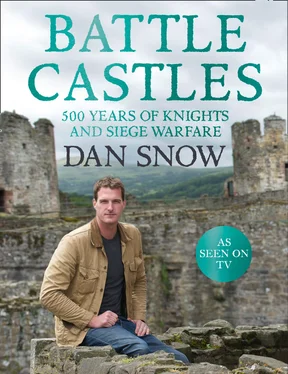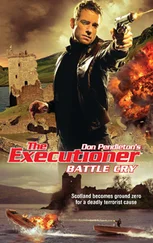
Dan Snow filming on location at the mighty Krak des Chevaliers in Syria
As I have toured the world looking at some of the most powerful castles ever built, I have been struck by the fact that, eventually even the most perfect castle will fall to its enemy. As the axe fell on the neck of King Charles in Whitehall in January 1649, the defenders of Pontefract Castle were still holding out for the royalist cause. When the news of his death reached them, the defenders negotiated a surrender. Castles can delay or grind an attacker’s force down and they can bolster a cause, but when that cause totally disappears, even the garrison of the greatest castle must submit to the inevitable. Castles may appear to sit, eternal and unshakeable above the fray, but in fact their survival and that of their garrisons depends ultimately on the wider strategic situation.
Following the war, a new, highly centralized unitary regime sought to bind Britain together as one nation and it was highly significant that they focussed on castles as representing the greatest physical obstacle to this process. Castles were seen, correctly, as the symptom of a political system dominated by an autonomous warrior elite. From now on, even after the restoration of the monarchy and Stuart family, defence would now be left to the State. The Crown built coastal forts and barracks for a national army while the vast majority of aristocrats lived in comfortable modern buildings rather than expensive, dingy, old castles.
In Western Europe gunpowder, government and fashion brought the era of classic castles with towering battlements to an end. But in many ways their story continues to this day. Man still fortifies. The massive forts in France and Belgium that stalled the Germans in World War One, the Atlantic Wall built by the Germans to protect the coast of Europe from the allies in World War Two, the contemporary walls around Israeli settlements, and the compound at Sangin in Helmand with its Hesco ramparts today, are all born of the same basic urges that drove early man to build the walls of Jericho. These defences, like castles, are force multipliers, they do the job of countless men; they provide a secure base from which to conduct combat operations and prevent an area falling into enemy hands. Perhaps we will never truly see the end of the castle.
What follows are chapters which feature the six mighty castles that I encountered during the production of the TV series Battle Castle . The contributors to the chapters in the book are leading authorities on each of the castles. Every chapter tells the story not only of the castle in question, its construction and character, but of the historical context behind its creation. Perhaps most importantly of all, each castle was tested in a terrible siege, the result of which would have a very real impact on subsequent history. These are some of the pivotal moments of history seen through the lens of a castle, and the battle for its control.

Hesco fortifications are pop-up containers into which materials such as sand or stone can be poured. The ones shown here protect a Dutch military base in Afghanistan
© Picture Contact BV / Alamy
Конец ознакомительного фрагмента.
Текст предоставлен ООО «ЛитРес».
Прочитайте эту книгу целиком, купив полную легальную версию на ЛитРес.
Безопасно оплатить книгу можно банковской картой Visa, MasterCard, Maestro, со счета мобильного телефона, с платежного терминала, в салоне МТС или Связной, через PayPal, WebMoney, Яндекс.Деньги, QIWI Кошелек, бонусными картами или другим удобным Вам способом.














